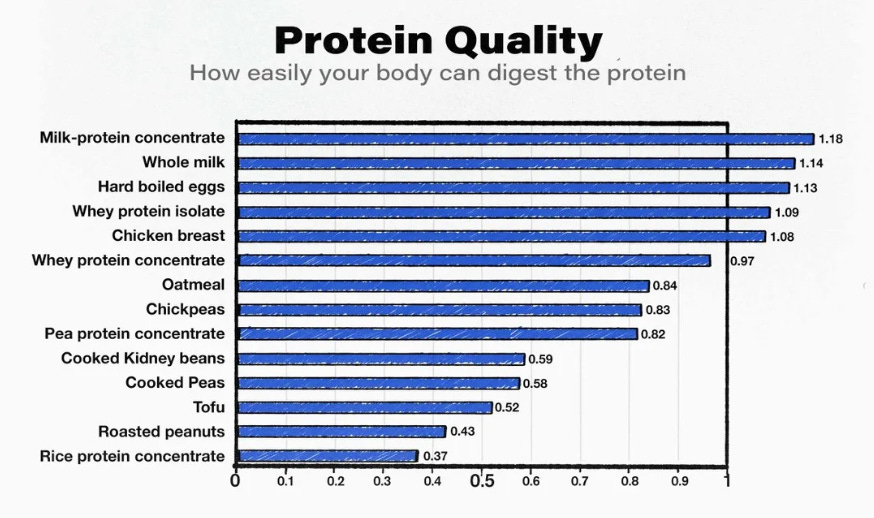· workouts · 14 min read
Best Wide Back Exercises: Top Picks (2024)
In the pursuit of a strong and sculpted physique, wide back exercises are a fundamental component of any comprehensive workout routine.
In the pursuit of a strong and sculpted physique, wide back exercises are a fundamental component of any comprehensive workout routine. These exercises target the muscles of the back, promoting strength, muscle mass, and overall development.
In this article, we will explore the wide back exercises that effectively engage primary and secondary muscle groups, the essential equipment needed for these workouts, and the top five exercises for building back muscle. We will delve into the recommended sets and reps, the benefits of incorporating wide back exercises into your fitness regimen, and the frequency at which they should be performed. We will provide valuable tips for proper form and technique to optimize the effectiveness of these exercises.
Whether you are a seasoned gym enthusiast or a beginner in the world of fitness, this comprehensive guide will equip you with the knowledge and tools necessary to enhance your back strength and achieve your fitness goals.
What Are Wide Back Exercises?
Wide back exercises refer to a variety of movements designed to target the back muscles, particularly the latissimus dorsi, to promote muscle development and overall back width.
These exercises are crucial for strengthening the upper body and improving posture. Including exercises such as pull-ups, lat pulldowns, and rows in your workout routine can effectively engage the back muscles and contribute to a balanced and strong physique. Incorporating wide back exercises in a fitness regimen not only enhances back aesthetics but also assists in overall strength and functionality.
Utilizing gym equipment such as the cable machine, barbells, and dumbbells allows for a diverse range of wide back exercises, catering to various fitness levels and goals.
What Muscles Do Wide Back Exercises Target?
Wide back exercises primarily target the major muscle groups of the back, including the latissimus dorsi, trapezius, and rhomboids, to promote strength and muscle development.
These exercises are especially effective in engaging the latissimus dorsi, commonly referred to as the lats, which are responsible for shoulder extension, adduction, and medial rotation.
The trapezius muscles, located in the upper back and neck area, are engaged during wide back exercises, aiding in shoulder and scapular movement.
The rhomboids, situated between the shoulder blades, play a crucial role in stabilizing and retracting the shoulder blades, contributing to improved posture and overall back strength.
What Are the Primary Muscles Worked?
The primary muscles worked during wide back exercises are the latissimus dorsi, commonly referred to as the lats, which play a pivotal role in promoting back width and overall strength building.
These powerful muscles are essential for achieving a well-rounded and strong back. The engagement of the latissimus dorsi in wide back exercises is crucial for developing a V-shaped torso, as they contribute significantly to the overall width of the back. The lats are responsible for various pulling movements, such as pull-ups and lat pulldowns, which are integral for enhancing both muscle development and strength gains in the back region.
What Are the Secondary Muscles Worked?
Secondary muscles targeted during wide back exercises include the trapezius, rhomboids, and rear deltoids, contributing to comprehensive back development and muscle engagement.
Engaging these secondary muscles not only enhances the strength and stability of the upper back and shoulders but also promotes well-rounded development, creating a balanced and proportionate physique.
The trapezius plays a vital role in controlling and stabilizing shoulder movement, while the rhomboids primarily help with scapular retraction, contributing to improved posture and overall upper body function.
The activation of the rear deltoids during wide back exercises enhances shoulder integrity and promotes a more sculpted appearance, elevating the effectiveness of the workout.
What Equipment Is Needed for Wide Back Exercises?
Several types of exercise equipment are suitable for wide back exercises, facilitating effective resistance training and targeted back training.
For instance, cable machines offer adjustable resistance for targeting specific back muscles, while resistance bands offer portable versatility for on-the-go workouts. Barbells and dumbbells provide classic strength training options, allowing for a wide range of back exercises such as rows, deadlifts, and pull-ups.
The assortment of equipment available at gyms or for home use enables individuals to vary their exercise routines, ensuring comprehensive back development and overall fitness.
Pull-up Bar
A pull-up bar is an essential piece of equipment for wide back exercises, enabling effective body weight exercises and strength-building movements.
It provides a challenging yet rewarding platform for engaging major back muscles, like the latissimus dorsi and trapezius. By incorporating pull-ups, chin-ups, and hanging leg raises, one can effectively target their back, improving strength, muscle definition, and overall functional fitness. The versatility of a pull-up bar allows for various grip positions, such as wide grip, close grip, and neutral grip, which help in targeting different areas of the back for a comprehensive workout. This equipment is a staple in any back training routine, providing an effective and efficient way to achieve a strong and well-defined back.
Dumbbells
Dumbbells are versatile tools that can be used for a variety of wide back exercises, promoting muscle strength and engaging the back muscles effectively.
They provide an excellent way to target different areas of the back, including the latissimus dorsi, trapezius, and rhomboids. By incorporating dumbbells into your back workouts, you can create a wide range of movements that challenge and develop strength in these muscles. The resistance provided by dumbbells allows for progressive overload, essential for muscle building. Whether it’s bent-over rows, dumbbell pullovers, or single-arm rows, the versatility of dumbbells enables you to customize your workout to suit your individual needs and goals.
Resistance Bands
Resistance bands offer a dynamic approach to wide back exercises, providing diverse exercise variations and contributing to comprehensive muscle development.
They enable individuals to target different muscle groups, ensuring a well-rounded and effective workout. By incorporating resistance bands into your routine, you can easily adjust the intensity of your exercises, making them suitable for all fitness levels. The portability of these bands allows for versatile training, making it convenient to exercise anytime, anywhere. Their ability to add resistance in both concentric and eccentric movements results in increased muscle activation, aiding in strength and muscle growth.
Top 5 Wide Back Exercises for Building Muscle
For individuals aiming to build muscle and achieve significant back development, incorporating the following top 5 wide back exercises into their workout program can yield remarkable results.
- The classic Barbell Bent-Over Rows, an excellent compound movement for overall back strength.
- Pull-Ups and Chin-Ups are highly effective for targeting the lats and engaging the entire back.
- The T-Bar Row is equally beneficial for developing thickness and width in the back, while the Seated Cable Row allows for constant tension and controlled movements.
It’s crucial to prioritize proper form and technique, gradually increasing the weight to ensure progressive overload and optimal muscle stimulation in a well-structured workout program.
Wide Grip Pull-ups
Wide grip pull-ups are a fundamental body weight exercise that targets the back muscles while promoting strength and engaging multiple muscle groups effectively.
They are renowned for their ability to build upper body strength, particularly focusing on the lats, traps, and biceps. This exercise not only effectively engages the back muscles but also enhances grip strength and shoulder stability.
Adding wide grip pull-ups to your strength training routine can significantly improve your overall upper body muscle development and provide a challenging yet rewarding workout experience.”
Bent-Over Rows
Bent-over rows, including variations such as the barbell row, are effective for targeting back width and promoting muscle strength, making them indispensable for wide back exercises.
These exercises work the latissimus dorsi, trapezius, and rhomboids, enhancing muscle development and strength. The bent-over position engages the lower back and stabilizing muscles, improving posture and providing a full range of motion. Proper form, such as maintaining a straight back and bracing the core, is crucial to maximize the benefits while minimizing the risk of injury. By incorporating these movements into your workout routine, you can effectively build a powerful and sculpted back.
Lat Pulldowns
Lat pulldowns are excellent for achieving exercise intensity and strength gains, specifically targeting the latissimus dorsi and contributing to wide back development.
This exercise engages the major muscle groups in your back, promoting muscle growth and overall strength. The controlled movement involved in lat pulldowns ensures that each repetition provides maximum resistance, leading to increased muscle activation and development. By incorporating lat pulldowns into your workout routine, you can effectively enhance your back strength and achieve a more defined and sculpted physique. It is a great way to challenge your body and push your limits, allowing you to progress towards your fitness goals.
T-Bar Rows
T-bar rows provide an effective exercise technique for strength building and back development, offering a unique approach to wide back exercises.
The controlled movement of the T-bar row engages the lats, traps, and rhomboids, facilitating overall back muscle development. This exercise also enhances grip strength, as it requires a firm grip on the T-bar handle. The adjustable weight plates allow for progressive overload, enabling users to continually challenge and strengthen their back muscles. T-bar rows promote proper posture and spinal alignment, crucial for injury prevention and overall functional strength.
Seated Cable Rows
Seated cable rows, facilitated by a cable machine, are effective for engaging the back muscles and promoting muscle building within the context of a comprehensive back workout.
This exercise allows individuals to target various muscles such as the latissimus dorsi, rhomboids, and trapezius, leading to well-rounded back development. By adjusting the handle grip, one can emphasize different areas of the back, providing versatility for muscle engagement. The controlled movement while performing seated cable rows also promotes muscle endurance and stability, crucial for a comprehensive back workout. Using proper form and technique during this exercise can prevent injury and enhance overall effectiveness in building a strong and well-defined back.
How Many Sets and Reps Should Be Done for Wide Back Exercises?
Determining the ideal number of sets and reps for wide back exercises is crucial for effective strength training and exercise progressions, ensuring optimal workout intensity and muscle engagement.
It is important to strike the right balance, as too few sets and reps may not provide sufficient challenge for muscle growth, while too many can lead to overtraining and fatigue. By understanding individual fitness goals and incorporating progressive overload, one can tailor the sets and reps to continually push the body’s limits and encourage muscle adaptation. This is especially impactful for those aiming to improve overall strength and endurance in their back muscles, ultimately enhancing overall workout effectiveness.
What Are the Benefits of Wide Back Exercises?
Engaging in wide back exercises offers numerous benefits, including the attainment of fitness goals, effective resistance training, and comprehensive muscle development for enhanced physical fitness.
These exercises target various muscles in the back, such as the latissimus dorsi, trapezius, and rhomboids, leading to improved posture and overall strength. Wide back exercises help increase workout intensity, allowing individuals to challenge themselves and further stimulate muscle growth. They also contribute to a balanced physique and can aid in reducing the risk of back-related injuries, making them an essential component of any well-rounded fitness regimen.
Improved Posture
Wide back exercises contribute to improved posture through enhanced exercise form and strength gains, promoting better spinal alignment and overall body positioning.
By engaging in exercises such as wide grip pull-ups, lat pulldowns, and rows, individuals can strengthen their back muscles, leading to increased spinal support and reduced likelihood of slouching. The development of a strong and toned back musculature can help maintain proper shoulder alignment, which is essential for reducing strain on the neck and upper back. These exercises also facilitate the activation of stabilizing muscles, contributing to a more balanced and upright posture.
Increased Strength and Muscle Mass
Engaging in wide back exercises leads to increased strength and muscle mass, fostering significant muscle development and enhancing overall muscle strength and conditioning.
Such exercises target large muscle groups, such as the latissimus dorsi, which are essential for pulling, lifting, and overall upper body strength. By incorporating wide back exercises into a well-rounded workout routine, individuals can effectively build muscle and increase their overall strength, leading to improved performance in various physical activities and promoting a more balanced and defined physique.
Better Overall Back Development
Wide back exercises contribute to better overall back development, facilitating comprehensive muscle building and effective strength training for enhanced back conditioning.
They play a crucial role in targeting the upper, middle, and lower back muscles, ensuring a balanced and symmetrical appearance while promoting functional strength and stability.
Incorporating wide grip pull-ups, bent-over rows, and lat pulldowns into a workout routine helps in engaging multiple muscle groups, fostering muscular hypertrophy and enhancing overall back performance.
These exercises also aid in improving posture and reducing the risk of back injuries by strengthening the supporting musculature.
Improved Athletic Performance
The integration of wide back exercises leads to improved athletic performance, enhancing sports-specific conditioning and promoting overall strength and conditioning for athletes.
These exercises play a fundamental role in developing the core power and stability required for various athletic movements. By targeting the muscles in the back, such as the latissimus dorsi, rhomboids, and traps, athletes can significantly enhance their ability to generate force and maintain proper posture during sports-specific activities. This, in turn, translates to improved agility, power output, and injury prevention, all of which are crucial for athletes of any level.
The inclusion of wide back exercises in training programs fosters a well-rounded approach to building a strong and resilient physique, thereby enhancing an athlete’s overall athletic prowess.
How Often Should Wide Back Exercises Be Done?
Determining the frequency and duration of wide back exercises is essential for maximizing strength gains and promoting effective muscle development, ensuring optimal progress and performance.
Consistency in engaging in wide back exercises allows the body to adapt and progressively build strength. It’s important to vary the intensity and exercise progressions to challenge the muscles and avoid plateaus. By gradually increasing the duration and frequency of these exercises, individuals can enhance their overall back strength, leading to better posture and reduced risk of back-related injuries.
A well-structured workout plan that incorporates adequate rest periods and gradual increments in intensity is crucial for achieving sustainable muscle development and strength gains.”
Tips for Proper Form and Technique
Implementing proper form and technique during wide back exercises is crucial for targeting specific muscle groups effectively and ensuring exercise safety to prevent potential injuries.
Maintaining the correct posture, such as keeping the chest open and shoulders back, is essential to engage the back muscles fully while avoiding undue strain on the shoulders. It’s also important to maintain a controlled and smooth motion throughout each rep, avoiding jerky movements that could lead to injury. Incorporating a full range of motion and avoiding excessive momentum will help to maximize the effectiveness of wide back exercises while minimizing the risk of strain or overextension.
Frequently Asked Questions
What are some effective wide back exercises for building a strong and defined back?
Some great wide back exercises include lat pulldowns, pull-ups, rows, deadlifts, and seated cable rows.
How can I modify my wide back exercises to target different areas of my back?
To target your upper back, focus on exercises that involve pulling movements from above your head. To target your lower back, incorporate more exercises that involve pulling from below your waist.
Is it necessary to use heavy weights for wide back exercises to see results?
While using heavy weights can be beneficial, it’s not the only way to see results. You can also increase the intensity of your wide back exercises by focusing on slow and controlled movements.
Are there any wide back exercises that can be done at home without any equipment?
Yes, you can do bodyweight exercises like pull-ups, inverted rows, and back extensions to target your back muscles without any equipment.
Can wide back exercises help improve my posture?
Yes, incorporating wide back exercises into your workout routine can help strengthen your back muscles, which can improve your posture and reduce back pain.
How often should I perform wide back exercises to see results?
It’s recommended to perform wide back exercises at least 2-3 times a week for optimal results. However, listen to your body and adjust the frequency based on your fitness level and recovery abilities.






